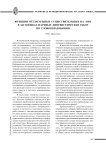Вестник Волгоградского государственного университета. Серия 2: Языкознание @jvolsu-linguistics
Статьи журнала - Вестник Волгоградского государственного университета. Серия 2: Языкознание
Все статьи: 1677
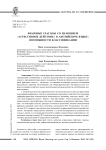
Фразовые глаголы со значением «агрессивное действие» в английском языке: возможности классификации
Статья научная
В статье описан фрагмент лексической системы английского языка, отражающий сложившиеся в социуме представления об агрессивном действии как одном из проявлений агрессивного поведения. В качестве объекта исследования выбраны фразовые глаголы - частотные, но наименее изученные средства обозначения агрессивного действия. Источниками для отбора фактического материала стали толковые словари английского языка, включающие типовые контексты употребления языковых единиц. С опорой на результаты дефиниционного и контекстуального анализа предложена классификация фразовых глаголов, называющих агрессивное действие. На основании дифференцирующих семантических компонентов в значениях глаголов (‘attack', ‘hit', ‘use a tool of aggressive action', ‘destroy', ‘hurt, kill, murder', ‘force') выявлено 6 лексико-семантических групп фразовых глаголов со значением «агрессивное действие». Показано, что некоторые глаголы, реализуя в контексте различные лексико-семантические варианты значений, могут быть отнесены к нескольким ЛСГ. Установлено, что глаголы всех ЛСГ содержат (эксплицитно или имплицитно выраженный) семантический компонент ‘инструмент агрессивного действия'. С учетом неоднородности семантики глагольных лексем и на основании различий в наборе семантических компонентов в их значениях в рамках каждой ЛСГ выделены подгруппы, отражающие языковую конкретизацию представлений об агрессивном действии.
Бесплатно
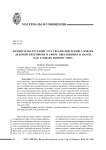
Статья научная
В статье предлагается концепция составления двуязычного французско-русского / русско-французского словаря деловой переписки в сфере образования и науки. Подобный словарь не имеет аналогов в лексикографии, так как, во-первых, описывает еще не закрепленную в специализированных лексикографических изданиях сферу жизни общества, во-вторых, создан с использованием идеографического метода распределения лексики в словарных статьях и предполагает включение в качестве иллюстративного материала соответствующих образцов деловой корреспонденции. Поскольку словарь двуязычный, с ним могут работать не только носители русского языка, но и их французские коллеги. Результаты исследования могут быть использованы для более глубокого изучения языка деловой переписки, описания своеобразия национальных форм делового общения, в том числе в сопоставительном плане.
Бесплатно
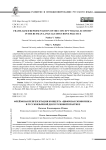
Фреймовая репрезентация концепта «цифровая экономика» в русскоязычной дискурсивной практике
Статья научная
В статье представлена первичная структура концепта «цифровая экономика». Источниками исследования послужили вербализующие этот концепт лексические единицы и словосочетания, содержащиеся в электронных словарях и научных публикациях соответствующей тематики, отобранных методом ключевого слова. С использованием фреймового анализа уточнено, что концепт «цифровая экономика», выступая в качестве когнитивной структуры, представляет иерархию, включающую субфреймы искусственный интеллект и данные, которые делятся на несколько взаимосвязанных слотов: развитие, информация, ИКТ, технологии. Выявлено наличие в структуре концепта «цифровая экономика» лингвокультурного ряда типичных тематических категорий и морфолого-синтаксических конструкций. Результатом применения лингвокультурного подхода стала тематическая категоризация единиц, репрезентирующих концепт «цифровая экономика». Лингвокогнитивный подход нашел отражение в частеречной категоризации репрезентантов исследуемого концепта. Установлено, что тематически концепт «цифровая экономика» представлен категориями «инструменты и средства», «процессы», «товары и услуги». В результате морфолого-синтаксической категоризации языковых единиц показано доминирование сочетаний, построенных по модели «прилагательное + существительное», в которых частотны атрибутивы информационная, цифровая, электронная, свидетельствующие об отражении процессов и категорий цифровизации и информатизации в современной языковой картине мира.
Бесплатно
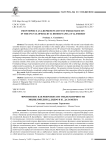
Фронтиспис как репрезентант эмблематичности энциклопедии Д. Дидро и Ж. Даламбера
Статья научная
Исследование, результаты которого представлены в статье, находится в русле актуальных проблем, связанных с изучением пространства научного дискурса, и относится к предметной сфере «семиотика». Выявлена прагматическая роль одного из околотекстовых элементов французской Энциклопедии, созданной Д. Дидро и Ж. Даламбером, - фронтисписа, релевантного для целостного понимания адресатом (потенциальным читателем) содержания и структуры многотомного издания. Доказано, что, находясь в сильной предтекстовой позиции, фронтиспис выполняет проспективную функцию в ориентировании адресата: данный паратекстовый элемент предваряет языковую составляющую текста и в соединении со словом образует семиотическое целое. Энциклопедия характеризуется как поликодовый текст, в котором научные знания кодируются вербальным и иконическим текстом. Описаны структурно-семантические отношения иконического и вербального компонентов Энциклопедии. Фронтиспис как изобразительный компонент осуществляет семасиологическую связь с вербальным знаком, обозначая ассоциативно соотносимые между собой предметные ситуации. Установлено, что роль фронтисписа заключается в расширении и углублении содержания вербальной составляющей крупнейшего справочного издания XVIII века. Семантические отношения между фронтисписом и текстом осуществляются посредством визуализированного символичного образа, обнаруживающего их связность в рамках целого книжного пространства.
Бесплатно
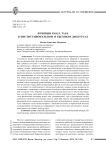
Функции small talk в институциональном и бытовом дискурсах
Статья научная
В статье анализируются дискурсивные параметры фатического речевого жанра small talk в контексте межличностного общения в ситуациях институциональной и бытовой коммуникации. Описываются общение в жанре smal talk в рамках статусно- и личностно-ориентированного дискурсов, а также формы фатического общения. Small talk рассматривается как комплекс коммуникативных техник, ориентированных на обеспечение атмосферы благожелательности, доброго расположения, необходимого для успешного продолжения бизнеса или развития личных отношений. Small talk охарактеризован как универсальный способ переключения со статусно-ролевых отношений на межличностные в начале или конце коммуникации. Показано, что использование small talk способствует созданию положительного имиджа коммуникантов в определенном социуме. Тематика и цели основной коммуникации, которая следует за инициирующей фазой или происходит перед финализирующей ее фазой, могут быть различными, однако это не влияет на необходимость продемонстрировать первые знаки внимания по отношению к знакомому и незнакомому человеку в официальной или неофициальной ситуации. Тип общения в жанре small talk реализуется и в институциональном, и в бытовом дискурсах на различных этапах межличностного общения, при этом фатическая интенция может как доминировать, так и приобретать второстепенное значение. Контактный диалог small talk, будучи низкоинформативной разновидностью социального взаимодействия, мотивирован и значим, поскольку с его помощью люди сигнализируют о желании вступить в вербальный контакт, устанавливают отношения и поддерживают межличностную дистанцию в коммуникативных ситуациях любого типа.
Бесплатно
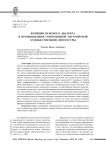
Функции венского диалекта в произведениях современной австрийской художественной литературы
Статья научная
Проблема определения лингвистического статуса австрийских диалектов и их функций в произведениях австрийской художественной литературы продолжает сохранять научную значимость. В статье выявляются основные особенности венского диалекта, делаются выводы о его статусе среди других австрийских диалектов, дается характеристика функций венского диалекта в произведениях австрийской художественной литературы. Автор статьи исходит из положения о том, что венский диалект выступает важным стилистическим средством. На основе анализа трех романов и одного рассказа современных австрийских писателей Х. Андерле («A schene Leich. Mordgeschichten»), Е. Менассе («Vienna»), Ф. Набля («Ödhof»), П. Кампы («Die zweite Reise») в статье были выявлены четыре функции венского диалекта. Посредством анализа реплик героев было доказано, что австрийские писатели используют венский диалект как 1) средство обозначения региональной принадлежности, 2) средство обозначения возраста, 3) средство обозначения социальной принадлежности и 4) способ выражения эмоций. Исследование речи героев австрийских художественных произведений позволило выявить наиболее употребительные венские слова и выражения и показать их роль в художественных текстах не только как средств создания речевого портрета героев, но и как маркеров своеобразия австрийского национального варианта современного немецкого языка.
Бесплатно
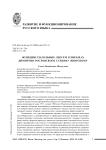
Функции глагольных лексем в письмах Димитрия Ростовского Стефану Яворскому
Статья научная
Статья посвящена актуальной лингвистической проблеме - функционированию языковых единиц в эпистолярных текстах. Материалом для анализа послужили частные письма Димитрия Ростовского его ближайшему другу Стефану Яворскому, написанные в конце 1707 - начале 1708 года. Объектом изучения стали глагольные лексемы: обозначая разнообразную деятельность, различные состояния человека и отношения между людьми, являются значимыми в текстах частных писем, которые отражают процесс общения, межличностного взаимодействия корреспондентов. Установлено, что в рассматриваемых письмах глагольные лексемы выполняют текстообразующую, стилеобразующую и характерологическую функции. Текстообразующую функцию глагольные лексические единицы реализуют, создавая этикетную рамку письма, оформляя переход от начального приветствия к основной части, эксплицируя и развертывая тему письма. Стилеобразующую функцию глаголы выполняют, будучи показателями авторского стиля, отражая характерные для него принципы отбора речевых средств и приемы их использования, создающие риторическую украшенность, экспрессию, иронию. Характерологическая функция глагольных лексем реализуется в двух аспектах: при характеристике адресата или отношений корреспондентов и при отражении личности автора писем. Он предстает как человек образованный, с высоким уровнем речевой культуры, виртуозно владеющий разнообразными ресурсами языка, о чем свидетельствует выявленное многообразие реализаций тектообразующей, стилеобразующей и характерологической функций глагольных лексем.
Бесплатно
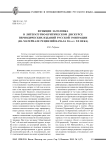
Статья научная
В статье с позиций интегративного подхода рассмотрен заголовок - обязательный компонент текстовой нормы - в системе прагматических координат «я-ты-здесь-сейчас» с опорой на когнитивно-дискурсивную парадигму в языкознании. На материале рецензий в периодических изданиях эмигрантов первой волны установлено, что в литературно-критическом дискурсе заголовок расширяет свои функции, эксплицируя дополнительные смыслы, отражающие мировидение коммуникантов.
Бесплатно
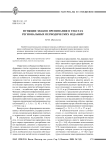
Функции знаков препинания в текстах региональных периодических изданий
Статья научная
В работе на региональном материале показаны особенности использования знаков препинания в публицистике. Осуществлен комплексный анализ функций знаков препинания с учетом основных принципов пунктуации, необходимости выделения частей текста, позиции пунктог-раммы в предложениях, стилистической принадлежности текстов.
Бесплатно
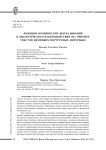
Статья научная
Феномен иронии рассматривается в рамках когнитивно-прагматического подхода к языку, при котором на первый план выдвигается прагматический потенциал исследуемого явления. Ирония трактуется как контекстуально-зависимое языковое явление, поскольку выражает оценочное отношение к объекту иронии, правильная интерпретация которого неразрывно связана с речевой ситуацией. В семантическом плане ирония порождается несоответствием между реальным и ожидаемым положением дел. Как показало исследование, в немецких портретных интервью возможна смена объекта иронического воздействия: как коммуникативный прием ирония широко используется и журналистом, и его собеседником. В высказываниях журналиста как инициатора диалогического взаимодействия были установлены следующие функции иронии: логическое и психологическое воздействие, раскрепощение собеседника, повышение авторитетности позиции журналиста (функция скрытой насмешки), установление контакта с собеседником. Были выявлены три основных типа ответных реплик адресата при его реагировании на иронию журналиста: иронический ответ-удивление, иронический ответ-уклонение, прямой ответ-игнорирование. Следовательно, в ответах собеседника ирония функционирует как средство снятия напряжения либо приобретает защитную функцию самоутверждения. Смеховая реакция адресата является прямым доказательством правильного декодирования иронического подтекста вопроса журналиста и сопровождает ответные реплики удивления и уклонения.
Бесплатно
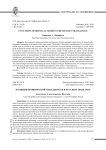
Функции иронической тональности в русском травелоге
Статья научная
Исследование проведено в русле лингвостилистического подхода, который позволяет установить прагматические основы существования иронической тональности. Статья посвящена рассмотрению травелога как особого типа текста и доказательству положения о том, что ирония составляет одну из характерных универсальных черт травелога как текста, определяющего границы «своего» и «чужого» и направленного на познание этих границ. Материалом для анализа послужили тексты XIX и XX вв., в которых ярко выражено авторское ироническое отношение к действительности. Выявлены функции иронической тональности в русском травелоге. Показана доминирующая роль просветительской функции. Охарактеризована специфика побудительной (побуждение читателя к повторению путешествия автора, а также к принятию его идей), экспрессивной, контактоустанавливающей (совмещающая как установление контакта, так и установку на гармонизацию общения), эстетической (эстетизация объекта описания) функций. Установлено, что иронической тональности свойственна полифункциональность - одновременная актуализация нескольких функций. В качестве продолжения исследования определено изучение иронической тональности в травелогах разного времени в сопоставительном аспекте, а также анализ функционирования иронической тональности в свете особенностей индивидуального стиля автора.
Бесплатно
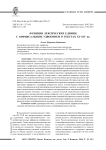
Функции лексических единиц с аффиксальным удвоением в текстах XI-XIV вв.
Статья научная
Лексические единицы с удвоением словообразовательных аффиксов, зафиксированные в текстах XI-XIV вв., отражают характерные для древнерусской письменности стилистические установки, а также выступают как средства продвижения и закрепления значимых для исторического развития русского языка структурно-семантических тенденций. Редупликация аффиксов в древнерусский период свойственна книжной речи, существовавшей на пересечении церковнославянской и собственно русской языковых традиций, она отражала наличие в древнерусском языке разных жанрово закрепленных норм. В соответствии с этим наиболее активные модели аффиксального удвоения включали в свой состав генетически различные (русские и церковнославянские) синонимические аффиксы. Контаминация собственно русских суффиксов с их южнославянскими синонимами была средством жанрово-стилистической адаптации дериватов к специфике конкретного текста. Семантическая избыточность слова, возникавшая вследствие аффиксальной редупликации, отвечала, во-первых, общим стилистическим особенностям книжно-литературной речи, насыщенной разнообразными видами повторов, а во-вторых, служила основой семантического развития определенных лексико-грамматических разрядов слов: в классе nomina abstracta удвоение суффиксов способствовало конкретизации значений абстрактного имени; в сфере глагольной префиксации нанизывание синонимических префиксов становилось базой развития новых модификационных значений - способов глагольного действия.
Бесплатно
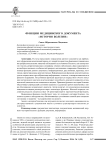
Функции медицинского документа "история болезни"
Статья научная
В статье предложено определение данного документа как вербального оформления компетенций врача, его знаний посредством фиксации (специальными профессиональными знаками) наблюдений за состоянием больного, как совокупности текстов, репрезентирующих специфику лечения заболевания. Дана характеристика наиболее значимых особенностей речевого воплощения содержания. Выявлены основные функции данного документа: информационная, регулятивная, правовая, логическая, ориентирующая, прагматическая. Информационная функция документа реализуется посредством строгой фиксации информации, точности, стандартизованности ее речевого выражения. Регулятивная функция реализуется посредством точного описания поставленного диагноза и актуализирует способность документа управлять познавательной деятельностью специалиста-медика. Правовая функция «истории болезни» обеспечивается фиксацией состояния пациента и сделанных врачом назначений, а также обоснованием клинического диагноза. Автор полагает, что клиническое мышление специалиста-медика реализуется через логическую функцию. Жесткий порядок следования разделов свидетельствует об ориентирующей и прагматической функциях. Выявленные функции способствуют тому, что документ «история болезни» становится одним из инструментов, обеспечивающих достижение главной цели специалиста-медика и пациента - выздоровления последнего. Анализ «истории болезни» как документа позволил дополнить имеющиеся в науке представления о документном тексте и уточнить существующую типологию документов.
Бесплатно
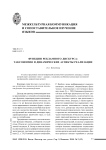
Функции рекламного дискурса: таксономия и динамические аспекты реализации
Статья научная
В статье предложена типология функций англоязычного рекламного дискурса, в основе которой лежит дихотомия «текст - дискурс», и выявлены особенности реализации установлен- ных функций в динамическом аспекте.
Бесплатно
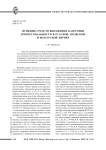
Функции средств выражения категории имперсональности в русской, польской и болгарской лирике
Статья научная
Средства выражения категории имперсональности как универсальной категории в славян- ских языках рассматриваются в изобразительно-выразительной функции, свойственной языко- вым единицам в поэтическом тексте; выявляется их роль в реализации идейно-художественного содержания стихотворений; характеризуется семантико-стилистический потенциал словоформ со значением безличности и анализируются способы их употребления, определяемые функцией эстетического воздействия.
Бесплатно
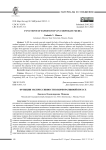
Функции экспрессивности в корпоративной прессе
Статья научная
Исследование направлено на определение функциональных особенностей категории экспрессивности в современной русскоязычной корпоративной прессе с учетом ее деления на издания для клиентов, персонала и партнеров. В статье с опорой на принципы анализа экспрессивных средств в разных функциональных стилях охарактеризованы возможности экспрессивных языковых и параязыковых средств для установления контакта с целевыми аудиториями корпоративных журналов, координации взаимодействия с разными целевыми аудиториями, решения практической задачи облегчения процесса продвижения положительного корпоративного имиджа компании или организации и производимых ими товаров и услуг. Показано, что корпоративные издания, будучи средствами массовой информации, реализуют функции, свойственные и некорпоративным СМИ: информирование и формирование общественного мнения. Выявлено, что в журналах для клиентов экспрессивность способствует продвижению товара компании и укреплению приверженности клиентов к компании и ее продукции; в журналах для персонала экспрессивность участвует в формировании модели поведения сотрудников, актуализируя ценности компании и демонстрируя роль работников в их сохранении; в журнале для партнеров экспрессивность становится средством удержания внимания читателя и воздействия на его мнение, усиливая рациональную оценку обсуждаемых общих профессиональных проблем.
Бесплатно
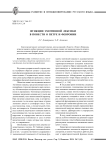
Функции эмотивной лексики в повести о Петре и Февронии
Статья научная
Комплексный анализ эмотивной лексики, использованной в Повести о Петре и Февронии, позволил выявить особую значимость данных языковых единиц для понимания замысла автора; в качестве основных функций, реализуемых рассматриваемыми лексемами, определены характерологическая и текстообразующая.
Бесплатно
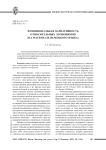
Функциональная вариативность относительных хрононимов (на материале немецкого языка)
Статья научная
В статье рассматриваются лексические средства выражения времени - хрононимы; проводится комплексный анализ относительных хрононимов; выявляется специфика их употребления в диалогических и нарративных высказываниях; определяются условия реализации дейктической и анафорической функций.
Бесплатно
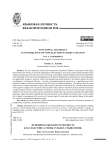
Функциональная неграмотность как следствие "смены субъекта мышления"
Статья научная
Важнейшая причина формирования функциональной неграмотности - воздействие цифровой информационной среды, в которой активно и целенаправленно распространяется редупликация знаний как мыслительной операции. Такой способ, становясь одним из основных в силу малой энергетической затратности, снижает степень личной ответственности индивида за характер и осмысленность деятельности. Редупликация и имитация как ментальные операции подкрепляются изменениями в памяти, все более превращающейся в транзактивную. В статье анализируется одно из проявлений функциональной неграмотности - отсутствие у значительной части обследованных студентов нейрофизиологических операций, необходимых для полного цикла смыслопорождения. Авторы установили в студенческих переводах наиболее типичные ошибки, которые отражают изменения в когнитивной деятельности обучающихся, демонстрируя изменения «субъекта мышления». Результаты анализа переводческой деятельности студентов показали, что в ней формируется устойчивая тенденция к «опрощению смыслов», возникающая на основе употребления только номинативных значений, использование внеконтекстного и неассоциативного значения слова, оперирование приблизительными значениями, стремление отождествлять однокорневые, но разные по значению лексемы. Доказано, что в значительной мере это является следствием активного использования различных типов наглядных знаков и частичного изменения качества вербального знака в цифровом информационном пространстве.
Бесплатно

